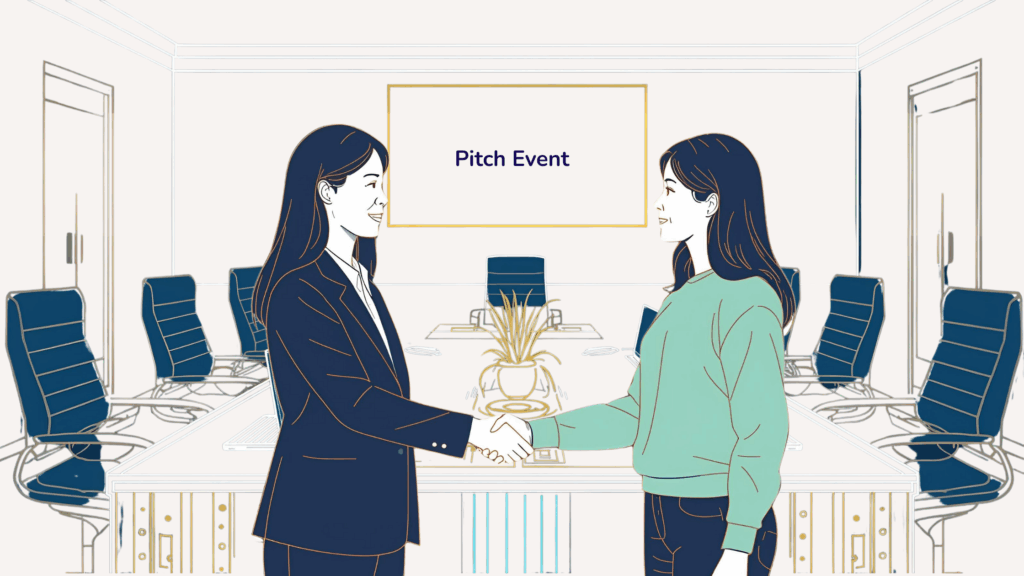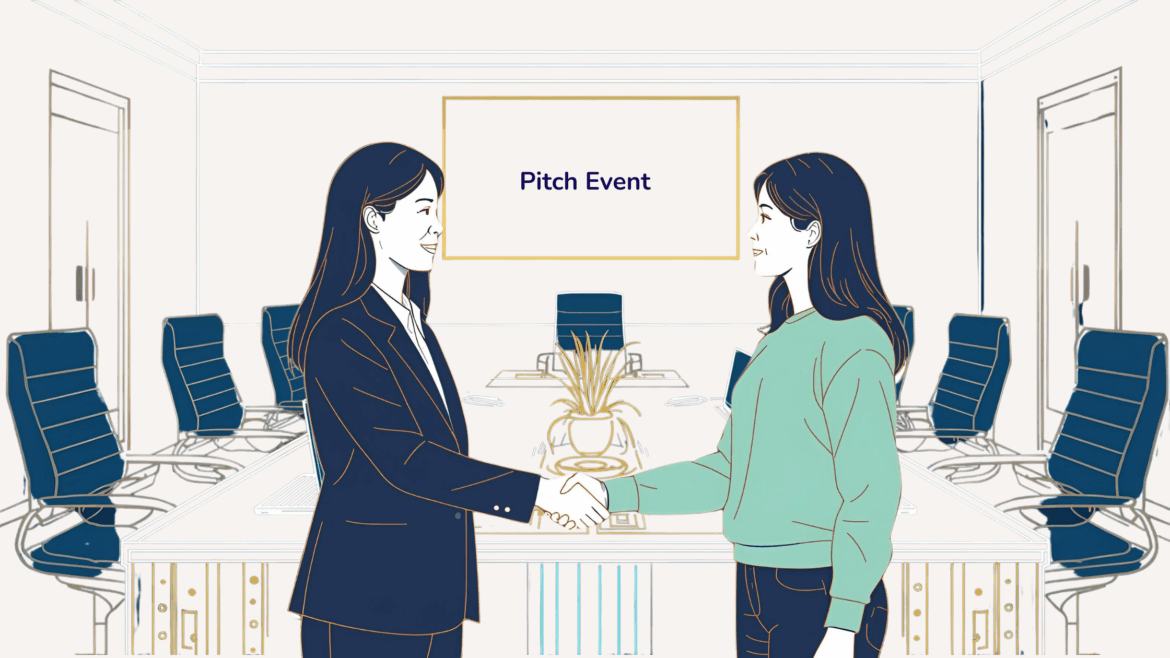Japan’s largely male-dominated startup ecosystem is undergoing a change as more women enter the arena with new business opportunities. And investors are paying attention.

Innovation in Japan has, for decades, been a male-dominated, conservative and network-driven space. Entrepreneurship was considered to be a risky career path, making it harder for women to have the same kind of access as their male counterparts.
But this is slowly changing. An increasing number of female entrepreneurs are taking the stage at pitch events in Japan and pushing for investments into their businesses.
At the same time, there’s a change taking place on the investor front as well. Entrepreneurs are no longer pitching solely to traditional venture capitalists. Their audience now consists of investors from Japanese corporate VC funds as well as independent VCs that are backing women-led startups in a bid to revamp the innovation ecosystem of the country.
HearstLab, the CVC accelerator of US media and business services firm Hearst, is one such unit that was founded with the mission of closing the gender gap in venture capital.
“To our knowledge, we’re currently the only CVC platform in Japan that holds a portfolio composed solely of women-led startups,” says Sumiyo Tsuchikawa, country manager for HearstLab Japan.
“This makes us unique not only in our investment thesis but also in our daily operations. Our focus combines business viability with a mission-driven commitment to gender equity. In Japan’s CVC environment, which remains largely male-dominated and traditionally risk-averse, this positioning is both rare and intentional.”

Shifting the gender gap
Japan is one of the lowest-ranked OECD countries when it comes to gender equality. Women hold between 10%-15% of management roles in major corporations, with the Global Gender Gap Index placing Japan at 118th out of 146 countries.
Around 8.4% Japanese startups are led by women – an increase of 0.1% since 2023. These startups raise less than half the capital as their male counterparts.
This pattern isn’t just unique to Japan, but its persistence is perhaps a reflection of larger societal norms at play, especially around gender roles, risk and leadership.
“It could be because capital providers aren’t looking at opportunities from a diverse perspective,” says Kathy Matsui, general partner and co-founder at Japanese VC fund MPower Partners.
“It could also be because women founders tend to make more conservative business projections than their male counterparts. As a VC investor, you typically want to see an ambitious return profile, right? So this could also impact the way female founders raise capital.”
Tsuchikawa, however, thinks having more women in decision-making roles can help turn things around. This is in line with the Japanese government’s aim of increasing the percentage of managerial positions held by women to at least 30% by 2030.
“We’ve only managed about 15% as of 2023 at this point, it’ll be nearly impossible to reach 30% in five years,” says Tsuchikawa.
In such a scenario, promoting talented women internally can help companies achieve this target, believes Tsuchikawa. “Once they’re in a decision-making position, they can then pull up other, more junior, women. Also, having women in the C-suite would mean they’d be able to advocate for women-led businesses as good investment opportunities.”
This is something HearstLab is focused on – correcting the gender imbalance and demonstrating that investing in women is not only equitable but economically smart.
“Our portfolio companies have shown strong performance in terms of capital efficiency and long-term sustainability,” states Tsuchikawa.
New business opportunities
Investing in women-led startups can bring a new set of opportunities to the table for investors. These are businesses focusing on tackling daily problems that the founders are dealing with – around caregiving, education, health management.
“There’s growing interest in DE&I, ESG, and impact investing among CVCs… Still, Japan’s CVC space is early in this journey. We’re optimistic—but intentional, and we know building trust and visibility takes time.”
Sumiyo Tsuchikawa, country manager for HearstLab Japan
“There are business opportunities in the market that are specific to women, such as femtech and caregiving services. It may be more challenging for male investors to identify with issues such as women’s health and other female-related needs,” states Matsui.
Investors are beginning to see the potential returns in this. Corporates with active VC arms have begun to incorporate diversity and environmental, social and governance (ESG) principles into their investment mandates.
“There’s growing interest in DE&I, ESG, and impact investing among CVCs. More corporate venture teams are engaging with diverse founders and joining community-driven initiatives. Still, Japan’s CVC space is early in this journey. We’re optimistic—but intentional, and we know building trust and visibility takes time,” says Tsuchikawa.
For example, Shiseido, a company with a long-standing history of promoting gender equality and women empowerment, has committed to integrating women-led innovation in its product and sustainability pipelines.
Similarly, independent VCs such as Matsui’s MPower Partners integrates gender diversity directly into its investment thesis – particularly through its WPower fund.
Co-founded and led by three women, MPower Partners is one of the largest women-led VCs in Japan. As a result, it attracts a lot of interest from female founders.
“Because we are middle-to-later-stage focused in the main fund, we were unable to invest in a lot of the women-led startups due to lack of stage fit. The WPower fund aims at breaking the 2% startup funding barrier by providing capital to female leaders who can shape the future,” says Matsui.
The WPower fund is led by Miwa Seki, one of three general partners of the main fund. The fund focuses on early-stage investments in the areas of women’s well-being, economic independence for women and children, childcare, housework and nursing care, and social diversity.

See how your corporate venture unit compares with global norms by taking part in our annual benchmarking survey.
All answers are anonymised.
All respondents receive a free, advance copy of the report results.
The road ahead
Transformation – particularly when it comes to deeply-entrenched cultural and business practices – takes time. Japan’s practice of long working hours, network-driven professional communities that are largely male, work-life balance and limited childcare infrastructure can make entrepreneurship a daunting exercise for many women.
“You need to provide an environment where each individual can fulfil their potential. But if the operating environment is dominated by one particular group, it is bound to be challenging for the minority to speak out, to be listened to or even respected,” says Matsui.
“As investors, we have to ensure there are safe spaces available for everyone.”
Tsuchikawa’s outlook remains equally measured.
“Over the past few years, we’ve seen encouraging signs. Government-led initiatives like APT Women, increasing media visibility, and the rise of networks such as Toget-HER or Tokyo Women in VC are contributing to a more inclusive ecosystem.
“That said, women still face significant funding gaps and social biases. The evolution is real, but there’s still a long journey ahead.”


AloJapan.com